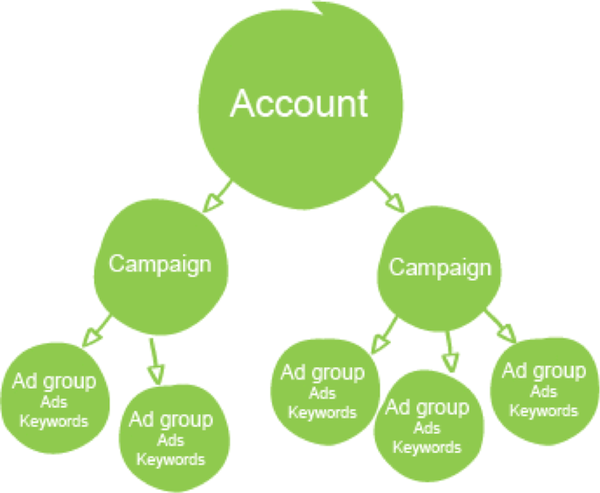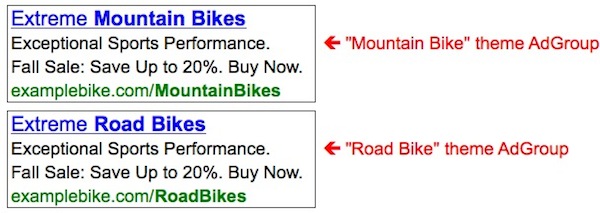Are you starting your own PPC campaign and want to know how to get everything set up for optimal efficiency? What is the best approach to starting PPC?
Most advertisers will focus their efforts on AdWords (Google) and adCenter (Yahoo/Bing). Many second-tier search engines exist as well and are definitely worth exploring depending on your goals. While we won’t dig into specific PPC channels right now, these general best practices will apply to most search-based PPC advertising.
One big mistake advertisers make is jumping into keyword generation without having a clear planning phase. Before accessing the ad platform or any buttons are pushed, there are three core planning factors to consider that will determine your approach to account set up.
- Goals: This will determine the networks you target, the type of keywords, ad copy, and so much more. A branding goal is very different from a sales goal, so as you can see, the approach to the account is determined by its goal.
- Budget: While its true there is no minimum budget for most of the ad platforms, you’re limited by your budget. Every monthly budget is divided by the number of days per month to give you the daily budget. Some low budgets won’t allow the campaigns to run properly because there simply isn’t enough budget per day to afford a significant amount of clicks. If your budget is low, focus only on the most relevant of campaigns.
- Relevance: Considering the above, you want to focus on the keyword themes that are closest to your business and goals, and that will fit into your budget. As your budget increases, it’s appropriate to target searches that will broaden reach, but may be slightly less relevant.
Keyword Research
Once the basic planning is completed, you can begin researching keywords and compartmentalize them into distinct themes. With the keyword themes, you can better develop a structure for the account. There are many free and paid tools available for keyword generation.
Start with core keyword phrases and then branch out into phrases that offer more detail. For instance, if you sell bicycles you should start with “road bikes” and “mountain bikes,” then branch out into more descriptive subsets or features, like “inexpensive road bikes” or “pro mountain bikes.”
Be careful not to fall into the trap of dumping all your keywords into one or two broad themes. This will dilute the relevance of the keywords in the campaign, and make it difficult to show the appropriate ad copy.
With your basic themes discovered through keyword generation, create the account structure. Campaigns are composed of Ad Groups, in each ad group are ads and keywords. The keywords will trigger the ads in the Ad Group, so you can customize the ad to be the most relevant to searcher so they are likely to click.
The campaigns and Ad Groups are simply ways to organize the information, like a file folder system. However, keep in mind that budgets and targeting is defined at the campaign level, so all of the Ad Group within a campaigns will share that budget and targeting. Any groups that are different themes, targeting, or allocated a separate budget, should be in a new campaign.

Ads and Ad Groups
To create your first Ad Group and ads, two things should be top of mind: relevancy and action. These two principles will greatly increase your campaign effectiveness.
Your Ad Group should contain keywords that are relevant to each other and your ads. Your ads should link to a page that is just as relevant. Also, you’ll get a higher CTR by developing ads with a strong call to action. For more details on crafting killer ad copy, see Killer PPC Ads: The Fundamentals.
Sine keywords are triggering the ads in each Ad Group, each ad should contain the core or theme keyword. You should also set up your display URL to have this core keyword as well.
For example:

Finally, pick the most relevant page for your Landing Page/destination URL. Don’t just send potential customers to your home page. A great place to get started with the best practices for landing pages is 7 Tips for Landing Pages Greatness.
Once running the campaigns with your landing page and collecting performance data, see Killer Landing Pages: 3 Examples of Landing Pages that Convert for help with refining and optimizing performance.
Launch Campaign: Measure and Tweak
Depending on your web analytics tool, make sure you set up your campaign and associated landing pages correctly so you can measure your results. Watch and test the first day of the campaign to ensure everything is working properly.
As you monitor your campaigns, you’ll undoubtedly find spots that need tweaking. Expand your keyword list if necessary, add more ad groups with relevant keywords, and check your conversion rates. After all, you’re going through all of this trouble to get people to your site for a reason, right?
Final Thoughts
Setting up a PPC campaign the right way can be a fun and rewarding journey. Following these steps has worked for me and for numerous PPC managers.
New tools and tips will always become available. Remember to play it smart, test, and make sure it works for you.
Don’t be afraid to try something different to see if it will make an improvement. PPC management is all about dialing it in and then making small methodical course corrections to squeeze out a little more performance when you can.

